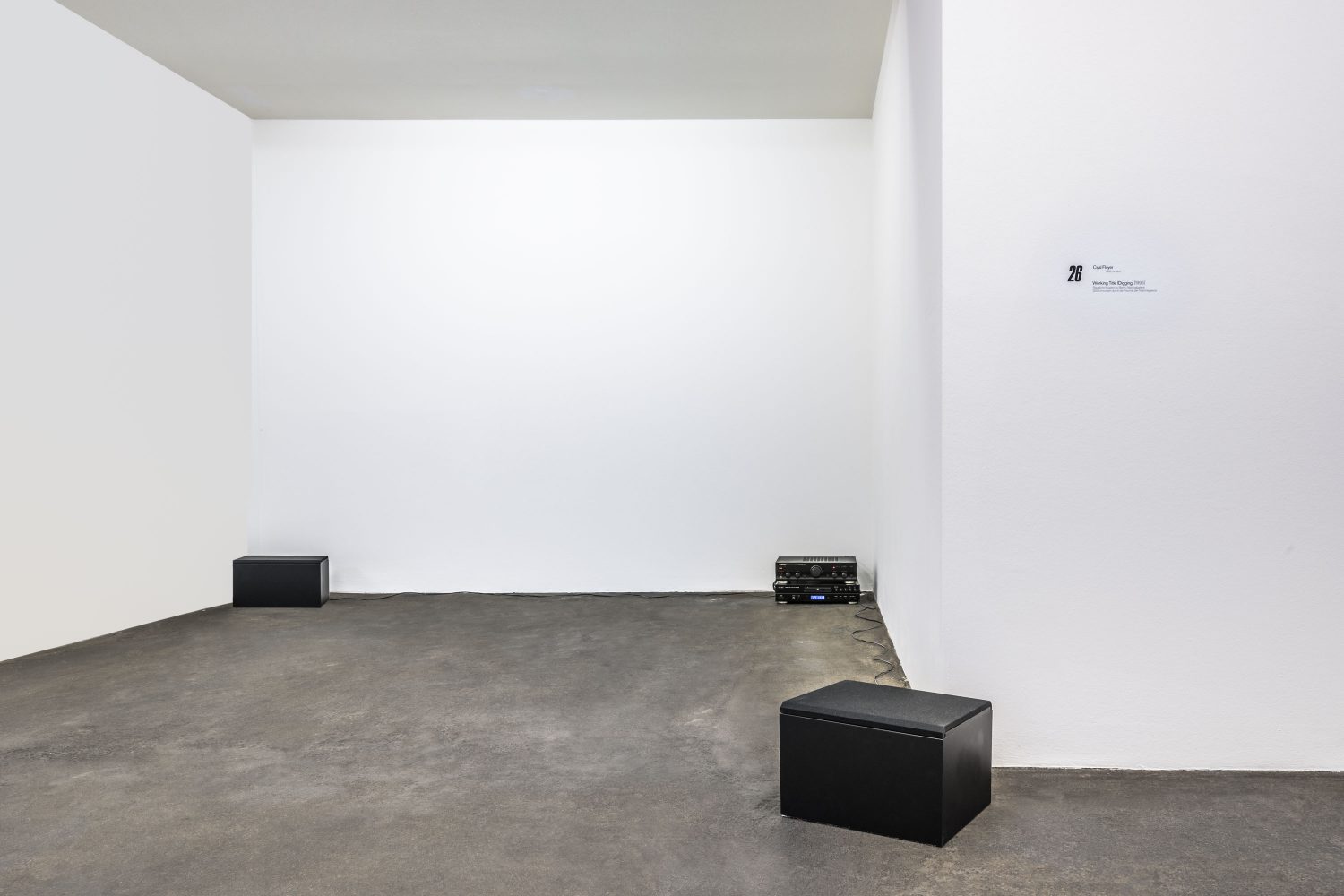Ceal Floyer
Working Title (Digging), 1995
Artist
Ceal Floyer
Title
Working Title (Digging)
Year of creation
1995
Year of acquisition
2008
In her conceptual works, Ceal Floyer mostly takes everyday objects and situations as her starting point. Through interventions that one only notices at second glance, it creates irritations that seem to contradict normal experience. Floyer's sound installation Working Title (Digging) plays with our expectations of what we hear. On a visual level, the work demonstrates its technical nature: a CD player stands on the floor, on top of which there is an amplifier, to which two speakers are connected with cables on the right and left. In contrast to installing a hi-fi system in the living room at home, the two speakers do not rise upright, but rather their front points upwards towards the ceiling. So they become black cuboids reminiscent of works of minimal art, which are arranged in the room at some distance from each other.
Two alternating, different sounds come from the speakers. While one emits a darker, slightly metallic tone, the other emits a short, rustling sound. The interaction results in a sustained, short clock frequency, which the viewer perceives best when he takes a position in the middle in front of the sound sources. A look at the subtitle reveals that this rhythm is the sound of digging with a spade, which Floyer has divided into the two channels of the stereo playback. On the right, the shovel pierces the earth, which is then thrown in an imaginary arc to the left to land in an equally invisible heap.
The fact that this process and the trajectory of the gravel throw occur automatically in the viewer's imagination is due to the sound order of things: Since people are used to associating objects and living beings with significant noises, simply hearing these sounds is enough to evoke these visually. As with Floyer, this effect can be enhanced by the possibility of technically recording and reproducing sound, as this allows each sound to be isolated from its original temporal and spatial origin. In addition, sounds that resemble these noises can be artificially generated. Because we don't know whether the soundtrack was actually recorded while digging or whether Floyer created it completely differently. Seen in this way, the installation Working Title (Digging) illustrates the associative potential of pure sound and its influence on our imagination. The name of the work also indicates this; the term “working title” can be understood in two ways. On the one hand, he alludes to the concrete, physical work of digging, and on the other hand, he describes a process that is only just beginning to emerge - in this case as an illusion in the ears of each individual.
Sven Beckstette
